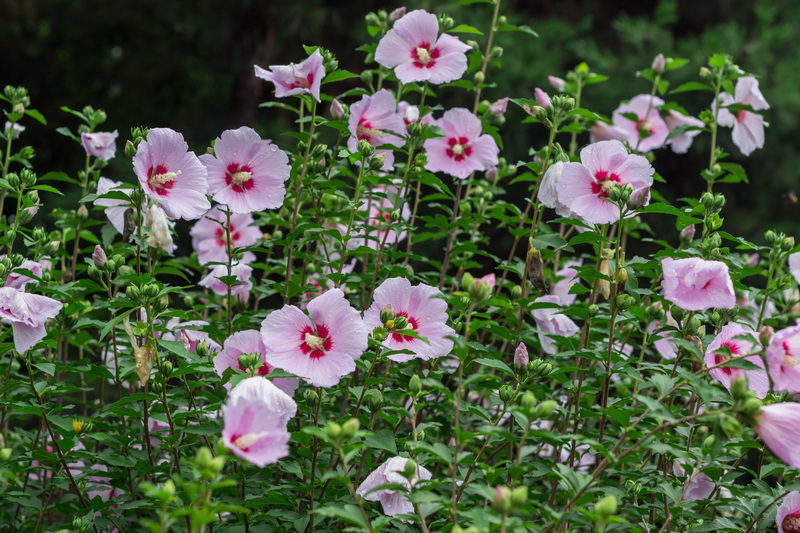Enhance Outdoor Spaces with Hedge Trimming Techniques
Posted on 29/06/2025
Enhance Outdoor Spaces with Hedge Trimming Techniques
Transforming your garden or yard into an inviting and well-organized environment relies heavily on effective hedge trimming techniques. A neatly trimmed hedge not only enhances the visual appeal of your landscape but also contributes to privacy, improved plant health, and increased property value. In this comprehensive guide, we explore essential practices, expert tips, and creative ideas to help you enhance outdoor spaces with the right hedge trimming strategies.

Understanding the Importance of Hedge Trimming
Hedge trimming is more than just a maintenance chore; it is a pivotal aspect of garden design and plant care. Well-maintained hedges act as natural barriers, define garden boundaries, offer habitat for wildlife, and provide a stylish backdrop for other plants. Regular hedge maintenance ensures hedges remain healthy, dense, and visually pleasing year-round.
- Increase curb appeal - Neatly trimmed hedges present a polished, tidy appearance that instantly lifts the aesthetic value of any outdoor space.
- Encourage healthy growth - Trimming stimulates new shoots and helps prevent plants from becoming leggy or overgrown.
- Maximize privacy - Dense hedges act as living fences, shielding your property from prying eyes and reducing noise.
- Define garden layout - Use creative trimming to shape hedges as attractive borders, pathways, or features.
The Benefits of Expert Hedge Trimming Techniques
Proper hedge cutting methods have both aesthetic and functional benefits. A well-trimmed hedge enhances outdoor living spaces by:
- Creating structure and formality in garden landscapes
- Directing foot traffic with living walls or pathways
- Improving light and air circulation for healthier plants
- Preventing diseases by removing dead or diseased wood
- Encouraging thick, lush foliage for vibrant green fences
Choosing the Right Hedge for Your Garden
Before diving into hedge trimming, it's crucial to select the appropriate plant varieties. The choice of species will influence the trimming technique, frequency, and tools required. Popular hedge varieties include:
- Boxwood (Buxus) - Renowned for its dense texture and suitability for intricate shapes.
- Yew (Taxus) - A slow-growing, hardy option that tolerates heavy pruning and shade.
- Privet (Ligustrum) - Fast-growing, easy to shape, and ideal for privacy hedges.
- Lonicera nitida - Popular for its compact growth and fine leaves.
- Laurel (Prunus laurocerasus) - Excellent for large, evergreen screens.
Consider your climate, desired hedge height, sun exposure, and maintenance commitment when selecting a hedge type. Native or well-adapted species typically require less care and are more resilient.
Essential Hedge Trimming Tools
Using the best hedge trimming tools can make all the difference, both in the quality of your results and the effort required. Here are some recommended tools for enhancing outdoor spaces with effective hedge cuts:
- Hedge Shears: Perfect for precision work and formal hedges, offering control over trimming small to medium-sized shrubs.
- Powered Hedge Trimmers: Available in electric, battery, or petrol variants, these save time on larger hedges.
- Loppers: Ideal for removing thicker branches within the hedge.
- Pruning Saws: For major overhauls or managing particularly tough wood.
- Gloves and Eye Protection: Safety should never be overlooked during hedge cutting.
Tip: Keep tools sharp and clean for quick, healthy cuts--as blunt blades bruise foliage and leave hedges vulnerable to disease.
Step-by-Step Guide: How to Trim Hedges Effectively
Mastering the art of hedge maintenance involves a blend of technique, timing, and patience. Follow these steps to achieve a professional look:
1. Assess the Hedge
- Walk around the hedge to inspect for dead, diseased, or crossing branches.
- Decide on the desired shape--formal (straight edges) or informal (natural curves).
2. Plan Your Cuts
- Use string lines or stakes for ultra-straight edges.
- Trim the sides first, working from bottom upward to achieve a slightly wider base than top. This allows sunlight to reach the lower branches and prevents thinning at the base (a common issue known as "legging up").
3. Top the Hedge
- Level the top, keeping your cuts steady for an even finish.
- Always avoid removing more than one-third of the plant's growth at any one time to minimize shock.
4. Refine the Shape
- Step back frequently to check your progress and make corrections as needed.
- Add finishing touches by snipping stray stems for a crisp outline.
5. Clean Up
- Collect and compost any healthy trimmings.
- Dispose of diseased wood responsibly to prevent the spread of pathogens.
When is the Best Time to Trim Hedges?
Timing your hedge trimming is crucial for optimal growth and appearance. The best time depends on the hedge type and your climate:
- Evergreen Hedges: Trim lightly in late spring; major shaping is best done in late summer.
- Deciduous Hedges: Prune during the dormant season (late winter or early spring) before new growth emerges.
- Flowering Hedges: Cut after blooming to avoid removing buds; timing varies by species.
Avoid trimming during extreme heat or frost, as plants are more vulnerable to stress during these periods.
Creative Hedge Trimming Techniques to Elevate Your Landscape
Once you've mastered the basics, try incorporating some advanced hedge cutting techniques to turn your outdoor spaces into works of art:
Topiary Art
- Create geometric shapes, spirals, or animal figures for a whimsical touch.
- Boxwoods and yews are excellent for sculpted topiary due to their dense foliage.
Layered and Tiered Hedges
- Trim hedges into multi-level tiers, cascades, or waves for visual interest.
- This technique works well in formal gardens or as focal points in contemporary landscapes.
Curved and Flowing Lines
- Depart from the rigid lines of traditional hedges by introducing flowing, curved shapes that mimic natural contours.
- This is ideal for informal gardens, softening sharp corners and blending with existing landscape features.
Common Mistakes to Avoid in Hedge Trimming
Even experienced gardeners can make errors during hedge trimming. Steer clear of these pitfalls to keep your hedges thriving and attractive:
- Over-pruning: Excessive cuts can weaken the plant and create unsightly gaps.
- Neglecting the base: Failing to keep the bottom wider than the top leads to thinning and loss of density at the base.
- Irregular trimming: Skipping regular sessions allows hedges to become unmanageable and woody.
- Incorrect timing: Trimming during active growth or in extreme weather can stress plants.
- Dull tools: Blunt blades tear foliage rather than making clean cuts, increasing disease risk.
Tips for Sustainable Hedge Care
Enhance your outdoor space while supporting the environment through sustainable practices:
- Choose native species: They require less water and maintenance.
- Compost trimmings: Healthy clippings make excellent mulch or compost for the garden.
- Create wildlife habitats: Allow a section of hedge to bloom or set berries to attract birds, bees, and beneficial insects.
- Water sensibly: Water deeply and infrequently, prioritizing roots over foliage.
- Avoid chemical pesticides: Use organic solutions to manage pests and disease.
Professional Hedge Trimming vs. DIY
For many homeowners, hedge trimming can be a rewarding DIY project. However, professional hedge trimming offers advantages for large, tall, or intricately shaped hedges:
- Expertise & precision: Trained professionals deliver uniform results and minimize mistakes.
- Specialized equipment: Pros have access to advanced tools for big or difficult jobs.
- Time savings: Large projects are completed efficiently.
- Safety: Professionals handle ladders, heavy equipment, and hazardous branches safely.
If your project is ambitious or you're unsure about technique, consulting a landscape specialist can be a wise investment.

Innovative Ideas to Enhance Outdoor Spaces with Hedges
- Outdoor rooms: Use tall hedges to enclose a garden nook, patio, or dining area, creating privacy and intimacy.
- Seasonal color: Integrate variegated or flowering hedges for changing hues throughout the year.
- Themed gardens: Use creatively shaped hedges to reinforce formal, Mediterranean, or cottage garden themes.
- Living sculptures: Sculpt topiary animals or abstract forms as focal points.
- Wildlife corridors: Plant mixed-species or fruiting hedges that support local biodiversity.
Conclusion: A Lasting Impact with the Right Hedge Trimming Methods
No matter your style or skill level, mastering quality hedge pruning techniques is the key to achieving gorgeous, well-defined outdoor spaces. Whether your goal is to establish privacy, frame your landscape, or introduce sculptural flair, regular hedge trimming is essential.
Remember:
- Choose the right species and tools for your climate and garden design.
- Trim with care and consistency, always prioritizing plant health.
- Experiment with shapes and sustainability for a unique and eco-friendly landscape.
Enhancing your outdoor spaces with hedge trimming is a rewarding journey--from neat garden borders to creative living masterpieces, the possibilities are vast and exciting. Embrace these tips, techniques, and ideas to elevate your landscape, ensuring your yard is the envy of the neighborhood for years to come!

